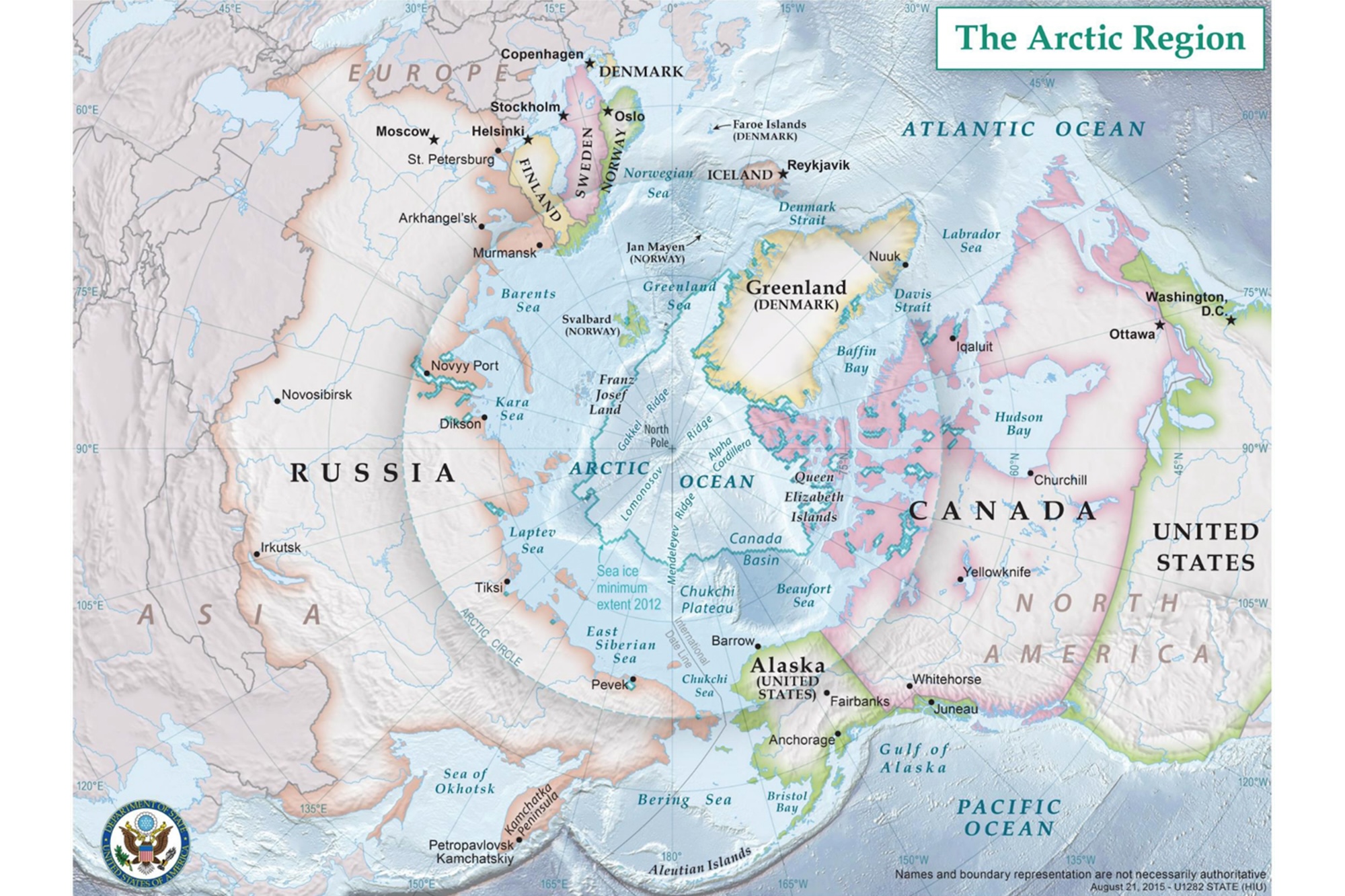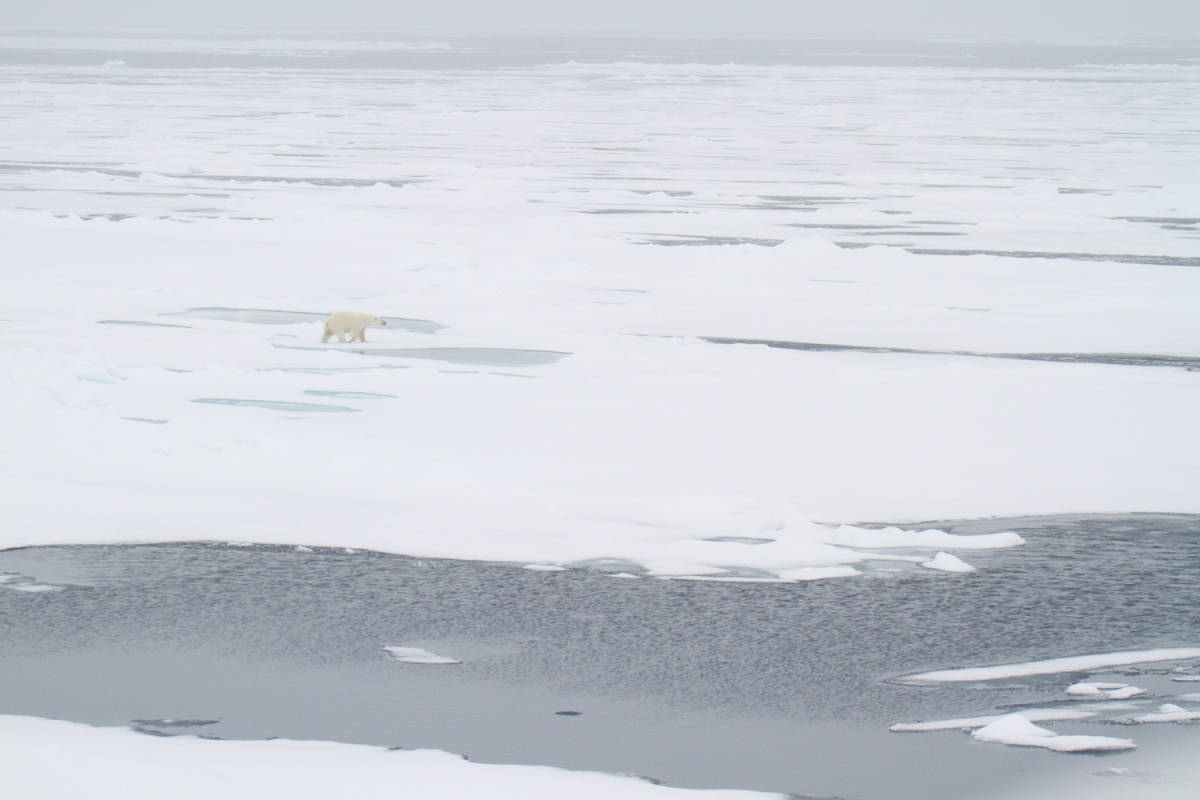Most maps do the Arctic a disservice. One glance at the classic mercator projection found on classroom walls paints the High North as a stretched out strip of land and sea. Alaska is on one side, Russia is way off on the other, and archipelagos like Svalbard seem to float away from everyone all by themselves.
Look at the globe from the top down, however, and a different story appears. The band of boreal forests is a global scarf wrapped from Russia and the Nordics through Canada and Alaska, with the tundra nestled between those trees and the Arctic Ocean farthest north. From this view, Arctic provinces, states, and countries look not like distant relatives but chummy siblings tucked together at the top of the world. Naturally, they have a lot in common. Permafrost thaw is a challenge for both Canada and Finland, melting sea ice similarly impacts Greenland and Norway, High North fisheries matter to Alaska and Iceland alike, and prioritizing Indigenous People is essential the Arctic over.
All Arctic regions are governed to varying degrees by congresses, parliaments, and other decision makers from southern, non-Arctic climes. Think Washington, D.C. for Alaska, Ottawa for Arctic Canada, or Copenhagen for Greenland. Non-Arctic nations in Europe and Asia are also growing their interest and involvement in goings-on in the High North. Given this, relations between northern communities and nations and those further south are often highlighted within Arctic affairs. But at April’s Arctic Encounter Symposium, North America’s largest Arctic policy and business gathering, a new throughline emerged: advancing east-west relations between the Arctic’s regions, nations, and people is essential.
To polar bear conservationists, this idea is nothing new.

Over a half-century of circumpolar collaboration
Scientists, policymakers, community members, resource managers, and advocates from across the Arctic have been advancing polar bear conservation together for decades. In fact, the modern era of international polar bear collaboration dates back to the 1960s.
With Arctic nations concerned about dwindling polar bear numbers due to overhunting, as well as a severe lack of data, the U.S. hosted the First International Scientific Meeting on the Polar Bear in 1965. During this event, it was agreed that each country polar bears inhabit would establish their own research program and share that knowledge with the others. To facilitate this information exchange, the Polar Bear Specialist Group was established in 1968 under the International Union for Conservation of Nature, or “IUCN.” The group has met regularly every two to three years since then.
Building on this with the goal of better addressing specific polar bear conservation concerns, the U.S., Canada, Russia (then the Soviet Union), Denmark (with respect to Greenland), and Norway signed the international Agreement on the Conservation of Polar Bears in 1973. By signing, those five countries established themselves as the Polar Bear Range States and agreed to collaborate on polar bear management across the Arctic. It was a huge step forward at the height of the Cold War, making the achievement all the more remarkable.
Originally, the Range States’ primary concern was addressing commercial and sport polar bear hunting and poaching, the greatest threat to the species at the time. Since then, the group has evolved to address the full breadth of impacts from human-caused climate change on polar bears — including diminishing sea ice and habitat loss — as well as threats from other human activities. To advance this work, the Range States developed the Circumpolar Action Plan for Polar Bears (CAP) whose implementation began in 2015 and will wrap up next year in 2025. CAP has already supported research and action regarding essential habitat, human-bear coexistence, population research, and more.
Where next?
Circumpolar challenges towards collaborative polar bear conservation still remain. The Range States need to continue improving their collective data-sharing and research, especially given the ongoing geopolitical uncertainties surrounding Russia. Already these have impacted studies of shared populations of polar bears in the Chukchi and Barents seas, and stalled progress on population counts in other parts of Russia, much of which is a big blank spot in terms of polar bear research. Comprising roughly half the Arctic’s land, coasts, and people, Russian cooperation is key to understanding and effectively protecting polar bears on a panarctic level. Progress made by all Range States under the CAP must also be built on and advanced after 2025, and all Arctic nations need to continue communicating and sharing data.
Just as the Arctic is interconnected, so too are polar bears. As new interests move into the Far North and climate change continues threatening Arctic ecosystems, the need for strengthening east-west polar bear conservation has perhaps never been greater.
Alex Shahbazi is an environmental policy, programs, & research consultant. He is an avid conservationist, writer, and advocate. Alex currently helps manage the Study of Environmental Arctic Change, an Arctic co-production research program, and assists Polar Bears International in their policy and advocacy work.

















